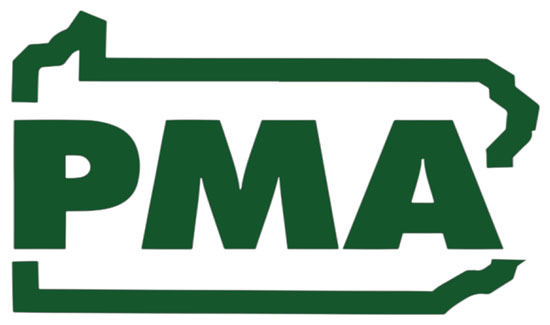Corporate Net Income Tax on Track for Reduction

With the budget negotiations in full swing, all of the Harrisburg decision-makers seem to agree that Pennsylvania’s highest flat-rate-in-the-nation Corporate Net Income Tax (CNIT) should be lowered. But how much the rate is reduced, over what period time, and if subsequent tax increases get attached on the back end, matter – so much so that it could be a plan not worth approving.
PMA supports a guaranteed two-point reduction over the next two years from the current 9.99 percent to 7.99 percent. However, the plan cannot include the gimmicks that act as backdoor tax increases that Gov. Wolf has proposed for CNIT changes over the years.
“While he says he supports reducing the CNI tax burden on the productive sector, Governor Wolf’s tax policy changes are poison pills that would increase complexity, make tax compliance more difficult and less certain, and actually take more money out of the private economy,” said PMA President & CEO David N. Taylor. “Pennsylvania’s employers need CNI tax relief — PERIOD.”
Currently, multiple CNIT reduction proposals are circulating in the General Assembly. The Senate, last week, approved one plan, SB 447, by state Sen. Michele Brooks (R-Mercer) on a strong 31-19 vote that would reduce the tax by half a point each year over the next six years, until the rate falls to 6.99 percent.
The Senate Finance Committee recently cleared a Sen. Bob Mensch (R-Montgomery) proposal that would also reduce the rate in steps: it would shave off one percent on Jan. 1, 2023. The rate would then drop another one percent on January 1 in each of the following years until it reaches 6.99 percent in January 2025.
And in April, the House, with a 195-8 vote, approved a Josh Kail’s (R-Beaver/Washington) House Bill 1960, that lowers the corporate net income tax rate in increments to 8.99% in 2023. It also includes a trigger mechanism to lower it to 7.99% by 2025 provided the state has surpluses of at least $500 million. As of June 1, the General Fund had a $4.9 billion surplus.
Kail said at the time: “As we continue to stand up for taxpayers and fight for jobs, we must develop and implement policies to make the Commonwealth a favorable place for employers to locate, invest and grow. It’s about jobs, families, growth and building a better Pennsylvania for our kids and grandkids.”
A similar bill by Sen. Ryan Aument (R-Lancaster) was passed 31-19 in the Senate just last week. Senate Bill 771 would gradually reduce the CNIT to 6.99% by 2024 and the rate could then be further reduced only if it meets or exceeds the revenue projections for 2024 at the 9.99% rate.
Under each proposal the state can well afford a potential initial loss in revenue – a loss that will be more than made up in coming years with the growth of investment in Pennsylvania, and with it, the growth of the tax base.
Estimates are that the Commonwealth has $12 billion in reserves and surpluses, due to inflation and the infusion of billions in federal Covid-cash, much of it under the American Rescue Plan Act (ARPA) of 2021. At least a few of those billion in virus relief aid must be spent by the end of 2024.
This surplus can be used by state lawmakers to reduce corporate taxes, according to a recent report by Joe Bishop-Henchman, Executive Vice President of the National Taxpayers Union Foundation (NTUF).
The U.S. Treasury Department issued rules covering restrictions on the use of federal rescue fund, and Pennsylvania’s “flush revenue situation will not trigger much of this process, if any at all,” Bishop-Henchman writes.
“A proposed tax cut of several hundred million dollars would not run Pennsylvania afoul of the ARPA provision,” he writes. “Pennsylvania’s revenue surplus is large enough that it could repeal the entire corporate income tax outright without triggering the federal provision.”
He added that other states have come to the same conclusion – that ARPA does not prohibit them from cutting taxes.
A year-old study out of Sen. Ryan Aument’s (R-Lancaster) office (whose CNIT reduction legislation, SB 771, also cleared the Senate last week) showed that lowering the rate by only one point will increase the Commonwealth’s population by 18,000 people in the first year alone, and the population will continue to increase after that.
“But perhaps the most compelling argument for lowering the CNI is the benefit that it would provide to Pennsylvania working families,” Aument wrote in a commentary published last year. “Decades of research demonstrate that there is a direct correlation between lower CNI rates and higher wages for working class families.”
So, what is next? Procedurally, no matter the legislative proposal, the final deal will likely appear in the tax code that will accompany the FY2022-23 budget. Historically, only bills that have passed at least one chamber receive consideration to be included in omnibus code legislation that is passed in conjunction with the finalized budget. This is also, unfortunately, where too many blunders of “pay-fors” or slight-of-hand gimmicks are proposed, potentially giving unfettered authority to the PA Department of Revenue to ruin potential positive progress to enhance Pennsylvania’s business competitiveness.
Stay tuned for more news on this important topic next week.





